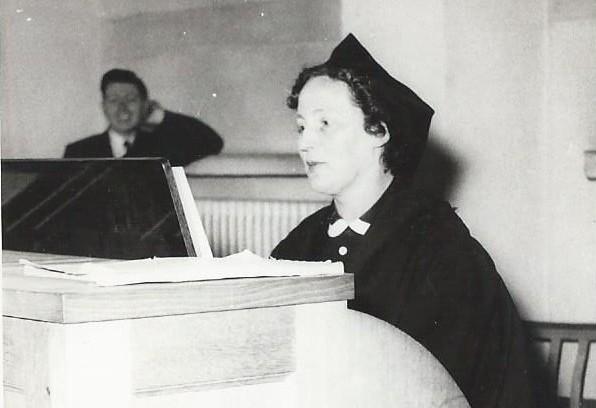
David Alston from Shortlands has lived in Bromley all his life. Here he provides some fond reminiscences on his and the area's past in Snapshots of Old Bromley.
CHURCH Road in north Bromley, off the Market Square, was indeed Bromley’s Gateway to Celebration, and was in addition itself a fascinating source of historical investigation.
With my family, in 1940 I came to live at No 23, which backed on to the rear of the northern High Street. We were adjacent to a pair of wooden houses dating from way back, today only matched by a similar pair along Mill Lane, situated at the lower end of Church House Grounds.
One immediate neighbour was Harry Nye, who lived in one of these picturesque cottages, and whose skill with the construction of model yachts was exceptional. He was to be seen regularly visiting the then extant boating pond in the nearby grounds, and his skill with wood was also exemplified in his everyday building activities with W H Willson & Co..
Further along Church Road, two more examples of wooden house construction were to be seen, one lit by a dated street lamp which gave to the scene a romantic Dickensian aura. One, not surprisingly, was known as the Committee Room, and was frequented by myself and contemporaries for youth club purposes, although to my knowledge no official arrangement was in place.
Of note, alongside the gated entrance to Martins Hill at the end of the road, was a First World War army hut, which remained as sturdy as ever until its (in my opinion wanton) later removal, and was host to activities of all kinds. These included a youth club and a home for Young Conservatives, and both my sister and I each held our 21st birthday parties there,
Martins Hill’s wrought iron gate was indeed the gateway to vistas. On Thursday nights, Bromley folk would foregather regularly to watch the superb displays of Brock’s fireworks from the Crystal Palace, several miles away and all the better for the distance presentation.
A far cry from today’s replacement St Mark’s Square, the picturesque vicarage of Ss Peter and Paul was adjacent to the top of Glass Mill Lane, and boasted a lovely entrance gate of its own, together with a period rectory.
To Victoria sponge competitions and pony rides (Dolly, pictured, lived to a good age) were added all the customary pleasures of lively garden parties enjoyed there on summer afternoons.

“I WAS seated one day at the organ,” so the old song goes, but certainly “weary and ill at ease” would be no way to describe the skilled feet and fingers of organist Mary Walker, maestro of Bromley Parish Church in the 50s, which wandered lightly over the ever-obedient keys.
Mary was a maestro indeed, and it was through her (a member of the Bach Choir) - at that time the latest in a succession of wonderful teachers, not least maestro Frederic Fertel a decade earlier - that I absorbed many a wondrous hour of music making. That’s me in the picture, enjoying the experience.
Incidentally, it was Mary who honoured me with the distinction of being at that time, in her estimation, one of the two top tenors in Bromley. (The other was Brian (Bill) Payne.) Probably wishful thinking, but thank you, again, Mary!


Comments: Our rules
We want our comments to be a lively and valuable part of our community - a place where readers can debate and engage with the most important local issues. The ability to comment on our stories is a privilege, not a right, however, and that privilege may be withdrawn if it is abused or misused.
Please report any comments that break our rules.
Read the rules here